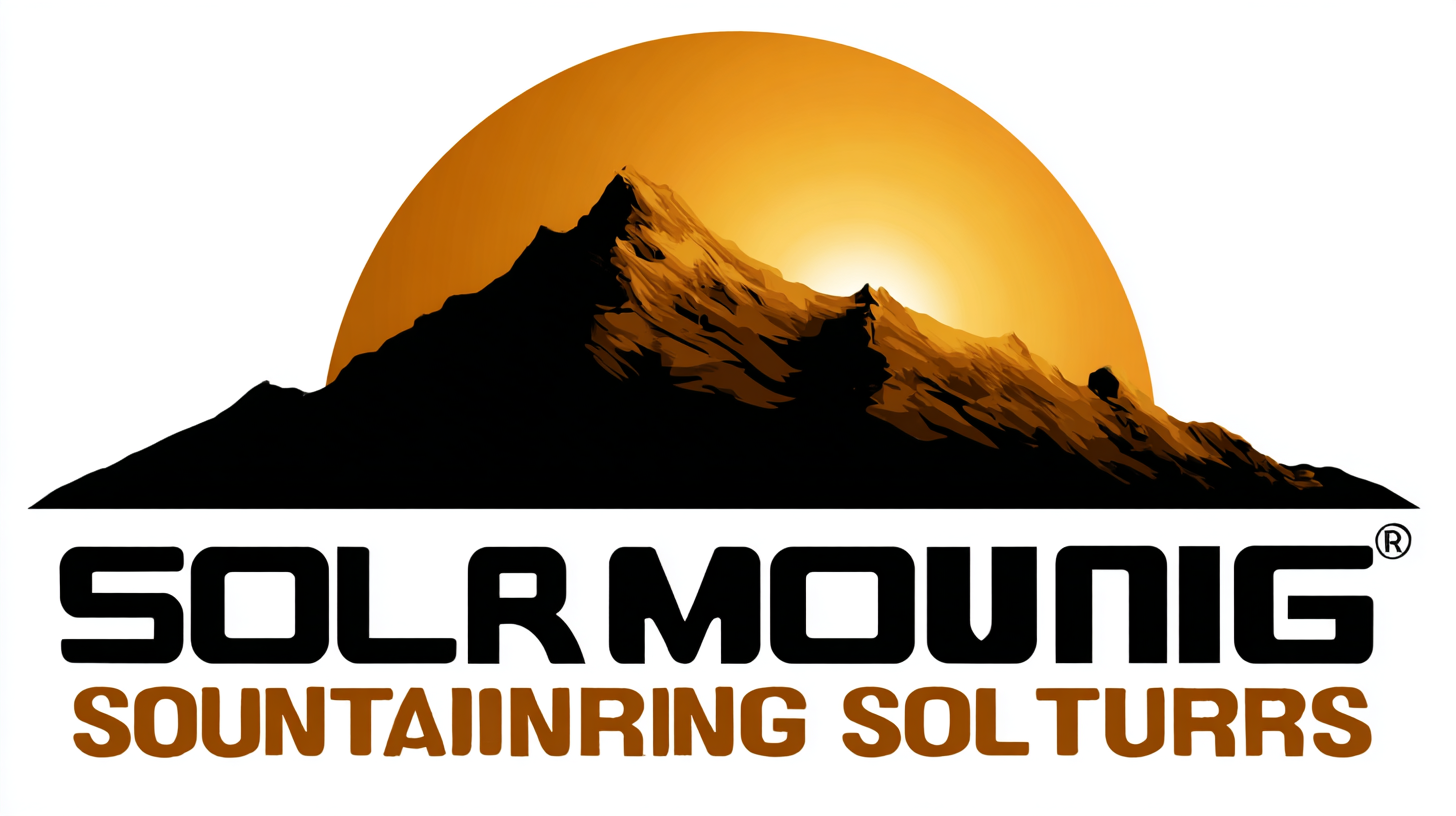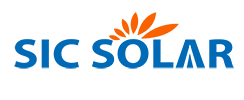In recent years, the global solar energy market has witnessed unprecedented growth, driven by the increasing demand for sustainable energy solutions and supportive governmental policies. According to the International Energy Agency (IEA), solar power is projected to account for nearly 20% of the world’s electricity generation by 2040, highlighting the critical role of efficient solar mounting systems in maximizing energy output and installation longevity. The selection of effective solar mounting solutions is paramount for ensuring the optimal performance of solar panels, regardless of the geographical location or specific conditions.

As the industry evolves, manufacturers, particularly in China, have begun to emerge as key players, providing high-quality solar mounting products that meet international standards. This blog will explore the top strategies for selecting the best solar mounting solutions worldwide, emphasizing the importance of quality, reliability, and adaptability in harnessing solar energy efficiently.
When choosing a solar mounting system, understanding the various types available is crucial to make an informed decision that caters to your specific needs. According to a report by the National Renewable Energy Laboratory (NREL), the three primary types of solar mounting systems are fixed-tilt, adjustable-tilt, and tracking systems.
Fixed-tilt systems are often the most cost-effective and are suitable for residential installations.
Adjustable-tilt systems offer better energy capture across seasons, ideal for regions with significant seasonal weather variation.
On the other hand, tracking systems, which follow the sun’s path throughout the day, can potentially boost energy production by 20-50%, as highlighted in a study by GTM Research.
They are particularly advantageous for large-scale solar farms in sunny regions, although they come with higher installation and maintenance costs.
By evaluating factors such as geographic location, budget constraints, and specific energy needs, you can determine the most suitable solar mounting system to maximize your investment in solar technology.
When selecting solar mounting solutions, several key factors should be taken into account to ensure optimal performance and longevity. First and foremost, the type of roof or ground space available plays a crucial role in determining the mounting system. For roofs, factors such as pitch, material, and orientation towards the sun can significantly influence the efficiency of solar panels. Ground installations may require rigorous assessments of soil type and local weather conditions to guarantee stability and durability against environmental elements.
Another vital aspect is the compatibility and specifications of the mounting system with the solar panels themselves. It is essential to verify that the mounting solution can accommodate the size and weight of the panels while providing adequate airflow for cooling. Further, considering the local regulations and permitting processes is critical, as different regions may have specific requirements impacting the type of mounting solutions that can be employed. Evaluating these factors carefully helps ensure that the chosen solar mounting system will provide maximum support and efficiency for your solar energy system.
This chart presents the different factors influencing the selection of solar mounting solutions, measured by their importance on a scale of 1 to 10.
When choosing solar mounting solutions, the decision between fixed and adjustable options is crucial. Fixed solar mounts are designed to hold solar panels in a stationary position, usually angled to capture the maximum sunlight throughout the day. This simplicity often translates to lower installation costs and a reduced risk of mechanical failures due to fewer moving parts. However, they may not optimize energy capture throughout the year, especially in regions with varying sun angles.
On the other hand, adjustable solar mounts offer flexibility by allowing users to change the angle of their solar panels seasonally. This capability can lead to increased energy production, making them an excellent choice for those seeking to maximize efficiency. The initial investment is typically higher due to the advanced mechanisms, but the potential return on energy savings can outweigh the upfront costs.
Tip: Consider your local climate and seasonal sun changes when choosing between fixed and adjustable mounts. If you live in an area with significant variations, adjustable mounts may provide substantial long-term benefits. Additionally, assess your budget and space constraints; sometimes, a fixed mount could be more practical and cost-effective for smaller installations.
| Mounting Type | Tilt Angle Adjustment | Cost (per kW) | Installation Ease | Durability (Years) | Efficiency Gain (%) |
|---|---|---|---|---|---|
| Fixed | No | $1,000 | Easy | 25 | 5-10 |
| Adjustable | Yes | $1,500 | Moderate | 20 | 10-15 |
| Ground Mounted | No | $1,200 | Easy | 30 | 7-12 |
| Pole Mounted | Yes | $1,800 | Moderate | 25 | 12-18 |
 When selecting solar mounting solutions, evaluating the impact of weather and location is crucial for optimizing performance and longevity. Different environments pose unique challenges; therefore, it’s essential to consider the average temperatures, precipitation patterns, and wind speeds specific to your area. For example, regions with heavy snowfall require mounting systems that can support increased loads, while coastal areas may need corrosion-resistant materials to withstand salty air.
When selecting solar mounting solutions, evaluating the impact of weather and location is crucial for optimizing performance and longevity. Different environments pose unique challenges; therefore, it’s essential to consider the average temperatures, precipitation patterns, and wind speeds specific to your area. For example, regions with heavy snowfall require mounting systems that can support increased loads, while coastal areas may need corrosion-resistant materials to withstand salty air.
Tip 1: Always consult local weather data and historical climate trends when choosing mounting solutions. This can guide you in selecting materials that are durable enough for your environment, ensuring a reliable installation.
Additionally, the angle and orientation of the mounting system can significantly influence energy production. Areas with varying sun exposure throughout the year may benefit from adjustable mounts that can be repositioned to maximize sunlight capture.
Tip 2: Consider using tracking mounts if you reside in areas where sunlight is inconsistent. These systems follow the sun's trajectory, potentially boosting energy yield and making the most of available daylight.
In regions prone to strong winds, robust structural designs are paramount to maintaining the integrity of the solar installation. Choosing the right mounting solution tailored to your environmental challenges not only protects your investment but enhances energy efficiency.
When selecting solar mounting solutions, cost-effectiveness and durability are paramount for optimizing investment returns. Research by the Solar Energy Industries Association (SEIA) indicates that the mounting system accounts for approximately 10-15% of the total costs in a solar installation. Therefore, choosing high-quality mounting solutions can significantly impact the overall project budget. Durable materials, such as aluminum and stainless steel, not only resist corrosion and harsh weather conditions but also offer long-term savings by reducing maintenance and replacement frequencies.
Moreover, according to a report by Grand View Research, the global solar mounting systems market is projected to reach $10.4 billion by 2027, highlighting the increasing demand for reliable and cost-effective solutions. Selecting a mounting system that is compliant with local regulations and designed to withstand local environmental conditions ensures longevity and efficiency. Properly engineered systems can enhance energy output and lower lifetime costs. Investing in these strategic solutions is critical for achieving not just immediate savings, but also sustainable energy production over the lifespan of solar panels, typically exceeding 25 years.

